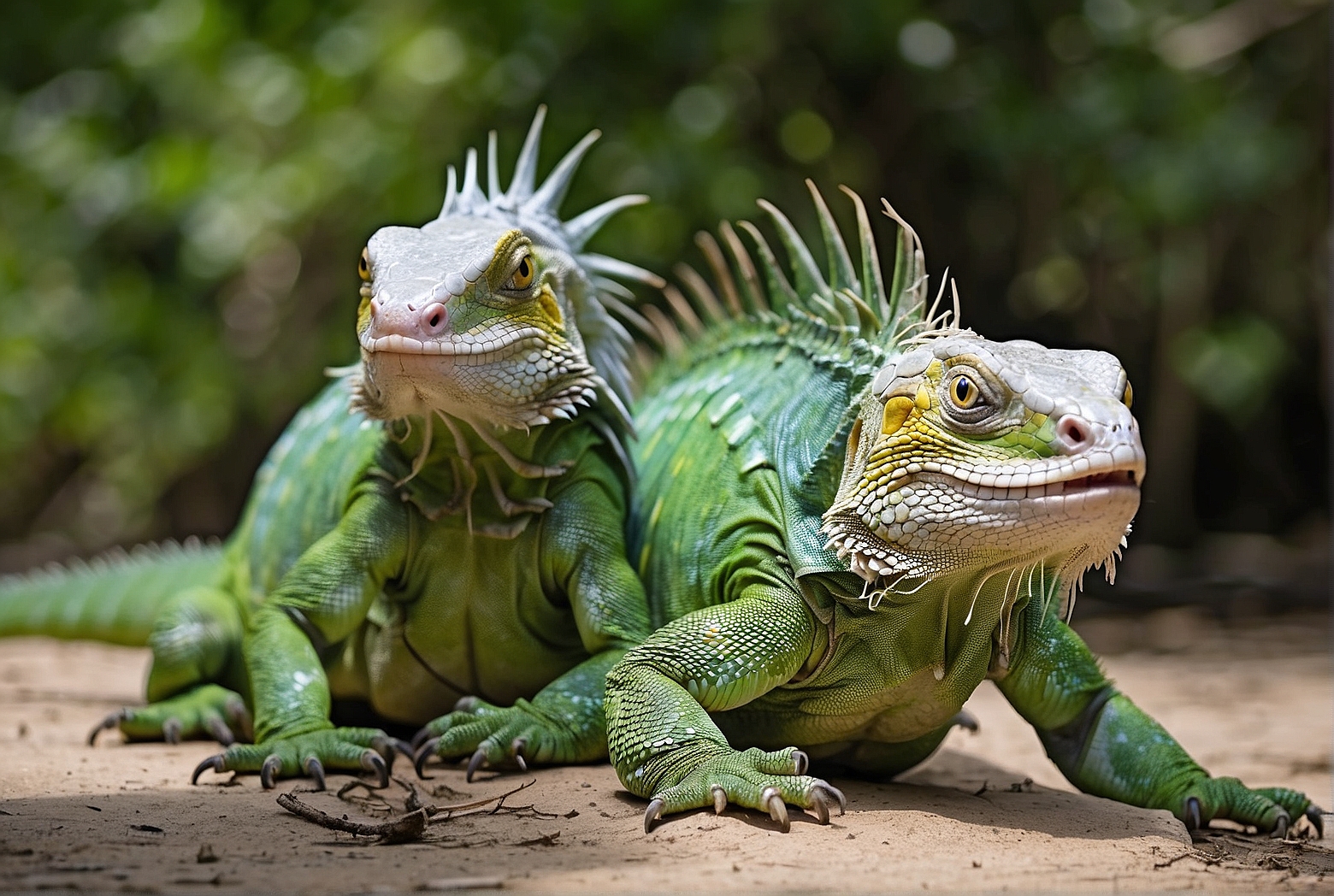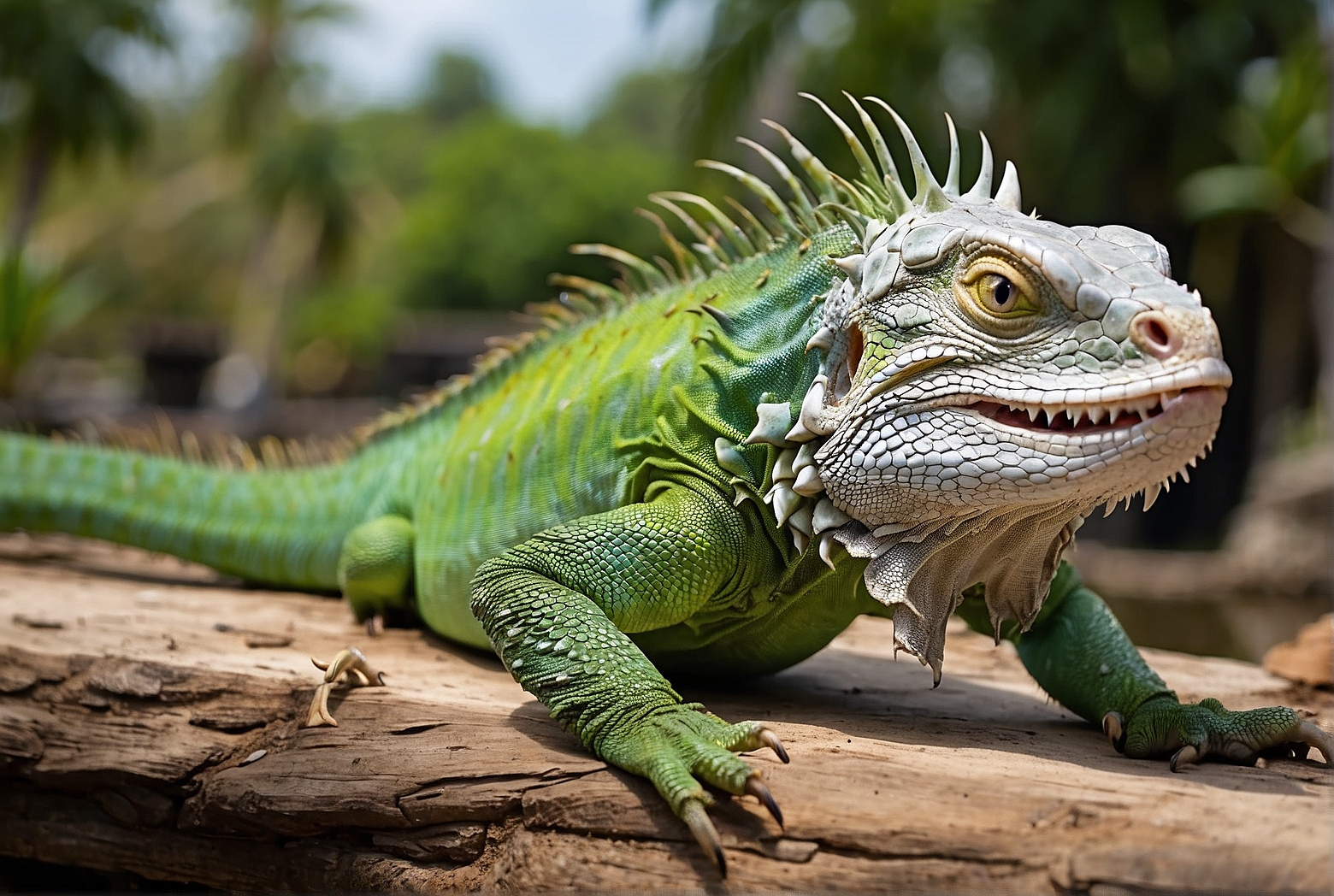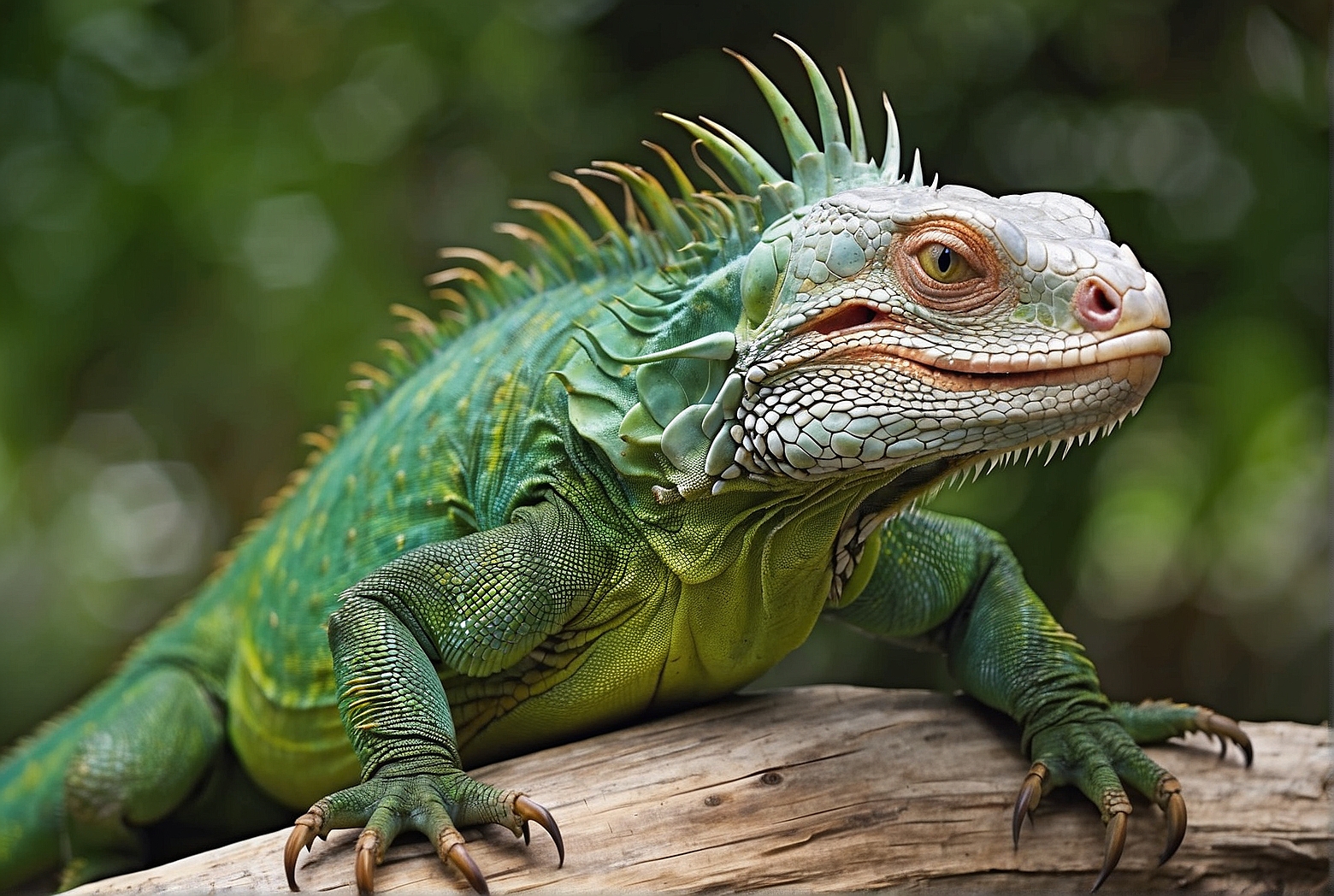Did you know that green iguanas are known for their aggressive behavior? Whether it’s their territorial nature or their readiness to defend themselves, understanding the reasons behind their aggression can help us coexist peacefully with these fascinating creatures. In this article, we will explore the various factors that contribute to green iguanas’ aggression and provide insights into how we can better understand and interact with them. Get ready to gain a deeper understanding of these amazing reptiles and learn how to appreciate their unique behavior!
Characteristics of Green Iguanas
Physical appearance
Green iguanas, also known as the common iguana, are large reptiles that can grow up to six feet in length, including their impressive tail. They have a unique appearance with rough, scaly skin that is primarily green in color, providing them with excellent camouflage in their natural habitat. Their long, slender bodies are adorned with spines along their back and a crest of spines along their tail. Green iguanas have powerful jaws with sharp teeth and claws that help them climb trees and defend themselves.
Dietary habits
Green iguanas are primarily herbivorous, meaning they mainly consume plant-based foods. Their diet consists of a wide variety of vegetation, including leaves, flowers, fruits, and even some vegetables. It is important to provide them with a diverse and balanced diet that includes calcium-rich foods to promote proper growth and development. They require a high intake of fiber for digestion and should have access to fresh water at all times.
Social behavior
Green iguanas are solitary animals, meaning they prefer to spend their time alone. However, they do have social interactions with other iguanas during mating and territorial disputes. As part of their social behavior, they communicate through various means, including head bobs, body color changes, and even a characteristic arm wave. Understanding their social behavior is crucial for providing them with suitable environments and minimizing stress.
Understanding Aggressive Behavior
Causes of aggression
Aggression in green iguanas can be triggered by various factors and is an important behavior to understand for both the well-being of the iguana and the safety of their owners. One common cause of aggression is fear or feeling threatened. Green iguanas may display defensive behaviors when they perceive a potential threat, such as loud noises or sudden movements. Additionally, improper handling or stressful environments can also contribute to aggressive behavior.
Territorial behavior
Green iguanas are known to exhibit territorial behavior, especially during the breeding season. They establish and defend their territories, which can lead to aggressive displays towards other iguanas or humans who intrude upon their space. Understanding these instincts and providing appropriate boundaries can help prevent aggressive encounters.

Protective behavior
Female green iguanas can become protective of their nesting sites and eggs. During this time, they may display aggressive behavior if they feel their nest or offspring are at risk. It is important to give them the space they need to care for their young without disturbance.
Signs of Aggression
Hissing and tail whipping
When feeling threatened or agitated, green iguanas often hiss loudly as a way to warn potential threats. They may also exhibit tail whipping, forcefully lashing their tail back and forth as a defense mechanism. These behaviors should be taken seriously, as they are clear indications of aggression.
Biting and scratching
When feeling cornered or provoked, green iguanas may resort to biting or scratching as a means of self-defense. Their sharp teeth and long claws can cause injuries, so it is essential to approach them with caution and give them necessary space when displaying aggressive behaviors.
Puffing up and displaying dominance
Green iguanas may puff up their bodies and display dominant behaviors as a way to establish dominance or intimidate others. This behavior is often accompanied by head bobbing or arm waving to assert their authority. It is crucial to understand these signals and avoid confrontation when an iguana is displaying dominance.
Environmental Factors
Habitat size and complexity
The environment in which green iguanas are kept can greatly influence their behavior. It is important to provide them with a suitably sized enclosure that mimics their natural habitat. The enclosure should offer ample space for climbing, basking, and hiding. Adding branches, rocks, and foliage can create a more complex environment that allows for exploration and promotes natural behaviors.
Temperature and humidity levels
Maintaining appropriate temperature and humidity levels is vital for the well-being of green iguanas. These reptiles are ectothermic, meaning they rely on external heat sources to regulate their body temperature. Providing a basking spot with a temperature range between 90-95°F and a cooler area around 80°F is crucial for their thermoregulation. Additionally, ensuring proper humidity levels between 60-80% can help support their overall health and prevent dehydration.

Handling and Taming Techniques
Approaching with caution
When handling green iguanas, it is important to approach them with caution, especially if they have displayed signs of aggression in the past. It is recommended to wear protective gloves to prevent accidental bites or scratches. Slow movements and gentle handling are key to building trust and reducing stress.
Building trust through regular interactions
Regular, gentle interactions can help tame and build trust with green iguanas over time. Offering them treats or their favorite foods can be used as positive reinforcement during these interactions. It is important to remember that each iguana is unique, and the time required to establish trust may vary. Patience, consistency, and respect for their boundaries are essential in the taming process.
Training and Socialization
Positive reinforcement techniques
Training green iguanas through positive reinforcement can be effective in reducing aggression and encouraging desired behaviors. When they exhibit calm and non-aggressive behavior, rewarding them with treats or praise can reinforce those behaviors. Consistency and patience are key when implementing a training regimen.
Exposing iguanas to different stimuli
Socializing green iguanas by exposing them to different stimuli can help reduce fear and aggression. Gradually introducing them to new environments, sounds, and people will help them develop confidence and adapt to various situations. However, it is important to ensure that these exposures are done in a safe and controlled manner to avoid overwhelming or stressing them.
Professional Assistance
Consulting a reptile behavior specialist
If green iguanas continue to exhibit aggressive behavior despite attempts at taming and training, it may be helpful to consult a reptile behavior specialist. These professionals have the knowledge and experience to assess the specific situation and provide guidance tailored to the individual iguana’s needs. They can offer valuable insights and techniques to address the aggression effectively.
Seeking veterinary advice
In some cases, aggressive behavior in green iguanas may be a result of underlying health issues. If there are concerns about the possible connection between aggression and health, it is recommended to seek veterinary advice. A thorough examination and diagnostic tests can help identify any underlying medical conditions that may be contributing to the aggression.
Preventing Aggression
Providing a suitable enclosure
Creating a suitable enclosure is essential for preventing aggression in green iguanas. The enclosure should be spacious enough to allow for natural movements and behaviors. Providing hiding spots, climbing structures, and areas for basking will help promote a sense of security and reduce stress. Regular cleaning and maintenance of the enclosure to ensure cleanliness and hygiene are also vital for their well-being.
Offering a balanced diet
A well-balanced diet is crucial for the overall health and behavior of green iguanas. Providing a variety of leafy greens, vegetables, and fruits that meet their nutritional needs is essential. Calcium and vitamin D3 supplementation is often necessary to prevent deficiencies and promote proper bone health. Ensuring the iguana’s dietary needs are met will contribute to their overall well-being and potentially reduce aggression.
Breed and Gender Considerations
Behavioral differences between male and female iguanas
Male and female green iguanas may exhibit different behaviors due to their inherent biological differences. Male iguanas are often more territorial and aggressive, especially during the breeding season when they compete for mates. Female iguanas may demonstrate protective behaviors when caring for their eggs. Understanding these differences is crucial for providing appropriate care and managing any potential aggression based on gender.
Recognizing reproductive behavior
Observing and understanding the reproductive behavior of green iguanas can help anticipate potential aggressive encounters. Male iguanas may display courtship behavior, such as head bobbing and arm waving, to attract females. Recognizing these behaviors and providing appropriate means for them to express their reproductive instincts can help prevent aggression.
Legal and Ethical Considerations
Importance of responsible ownership
Owning a green iguana comes with the responsibility to provide proper care, nutrition, and a suitable environment for their well-being. It is crucial to consider the commitment and resources required before bringing an iguana into your home. Green iguanas have specific needs that must be met to ensure they live a healthy and fulfilling life.
Understanding local laws regarding pet iguanas
Before acquiring a green iguana as a pet, it is essential to research and understand the local laws and regulations regarding their ownership. Some regions may have restrictions on owning exotic reptiles or require permits to keep them legally. By adhering to these laws, you can ensure your actions are ethical and responsible.
In conclusion, understanding the characteristics and behaviors of green iguanas is crucial for the well-being of these fascinating reptiles. Recognizing the signs of aggression, addressing environmental factors, and implementing proper handling and taming techniques can help prevent or manage aggression effectively. Seeking professional assistance when needed and maintaining a responsible approach to ownership are essential for the successful and fulfilling companionship with green iguanas.
